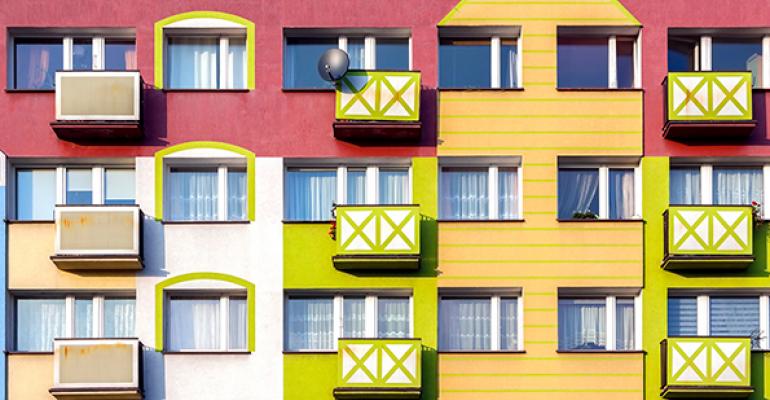The market for apartment properties is likely to keep expanding. That’s despite the fact that the business of investing in apartments has already been in expansion for six years, since property prices hit their low point in 2009. No boom lasts forever, but the long, slow recovery from the financial crisis continues to bring new capital to multifamily real estate, which still provides relative high yields compared to other investments.
“Real estate investors love apartments. There’s more equity than ever chasing multifamily,” says Jubeen Vaghefi, managing director for JLL’s Capital Markets Group. “We feel very, very bullish.”
It keeps going, and going, and going…
Investors spent more money to buy apartment properties over the last four years than they spent in the four years leading up to the financial crisis, according to data firm Real Capital Analytics (RCA), based in New York City.
“The apartment market is certainly higher,” says Jim Costello, senior vice president for RCA. The dollar volume of apartment properties bought by investors over the four year that ended in the first half of 2015 is 14 percent larger than the four years that ended in 2008 with the financial crisis.
A strengthening national economy is help to provide demand for the apartment markets, and the new apartments under construction seem likely to find renters. “Fundamentals are very, very healthy,” according to JLL’s Vaghefi.
Property prices are also higher now than the prior peak, relative to the income from the properties.
“Average cap rates are lower than they were in the previous high-water mark,” says Costello. Even through property prices are very high—and cap rates are very low—by historical standards, average cap rates are still significantly higher than the interest rates available for financing. That leaves room for interest rates to inch higher without disrupting the property markets.
“Baring any global disruption to the financial markets, the level of cap rates are sustainable for the foreseeable future,” says Vaghefi.
Also, even with very low cap rates apartment properties continue to attract a healthy range of new investors. “We have more diversity of capital,” says Costello. “Foreign money is looking at the U.S., for example. Our cap rates across the board are much higher than the rest of the developed world.”
That’s a big difference from the last boom, when a large share of property purchases were made by apartment companies buying each other. “In 2007, there was a point where half of all deals were entity-level transactions,” says Costello. “Clearly, it’s not there today.”
Opportunities for garden apartments, a few secondary markets
Prices have risen the most for high-rise properties in top markets, perhaps leaving an opportunity for investors to catch price appreciation for garden apartment properties and a few secondary markets.
As property prices rose, average cap rates fell 6.0 percent for apartment properties, down 20 basis points from the year before. That includes a substantial price increase for midrise and high rise buildings, driving cap rates down to 4.9 percent, down 40 basis points from the year before. Prices for garden apartment properties have also risen, but not as much, driving cap rates down to an average 6.2 percent, down 20 basis points from the year before, according to RCA.
“For garden apartment properties, prices have not adjusted yet,” says Costello. “That may represent an opportunity.”
Prices for assets in the six major metros—New York, Chicago, San Francisco, Los Angeles, Boston and Washington, D.C.—are now 163 percent higher than the 2009 low points while assets in the non-major markets are only 101 percent higher than previous lows. A few secondary markets like Charlotte, N.C., and Portland, Ore, show potential for price hikes—cap rates are still more than 30 basis points higher than the previous peak. Also, both Portland and Charlotte have strong, diverse demand for apartment properties from buyers. Investors there have spent significantly more money over the last four years compared to the four years before the crash.

